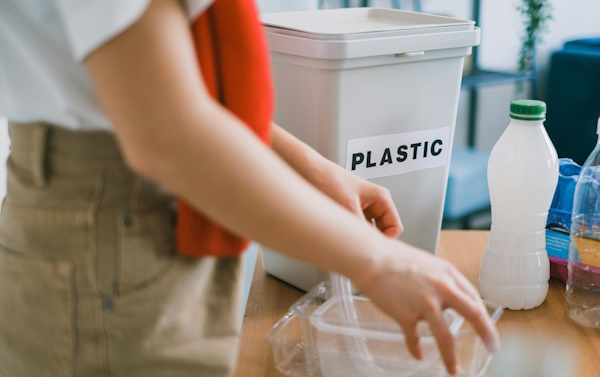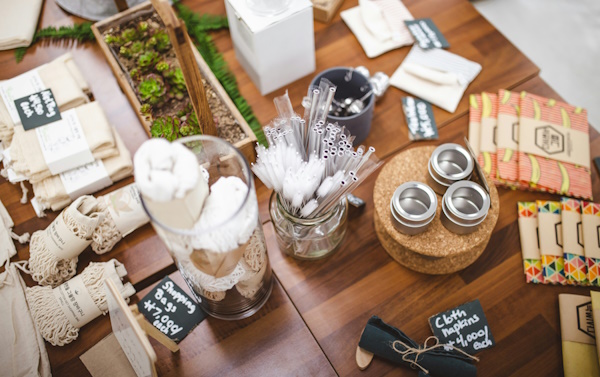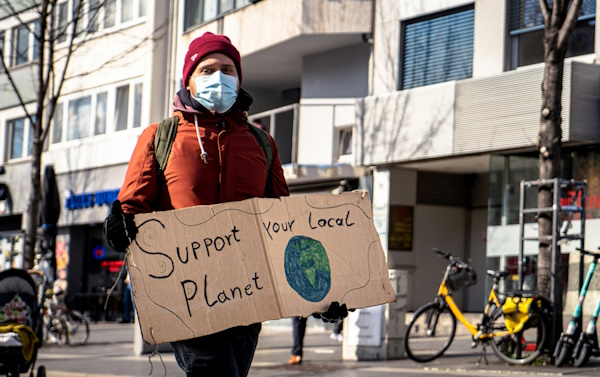Sustainable Fashion: Building a Greener Wardrobe
Sustainable fashion isn't just a trend; it's a revolution. As you become more conscious of the impact your choices have on the environment, turning to sustainable fashion becomes a natural step forward. It's all about making fashion choices that are kinder to the planet, without sacrificing style or quality.
Choosing sustainable fashion means embracing a wardrobe that lasts longer, reduces waste, and supports ethical practices. It's a powerful way to express your personal style while also making a positive impact on the world. Let's dive into how you can be a part of this transformative movement and why it matters more than ever.
What is Sustainable Fashion?
Sustainable fashion is more than just a buzzword; it's a commitment to fostering a greener planet through your wardrobe choices. When you choose sustainable fashion, you're opting for apparel that focuses on minimizing environmental impacts and promoting social and ecological responsibility. This means wearing clothes that last longer, generate less waste, and are produced in ways that are kinder to the environment and the people involved in their creation.
At its core, sustainable fashion advocates for a system that Respects Environmental Boundaries and Supports Fair Practices. This involves everything from the sourcing of eco-friendly materials, like organic cotton or recycled polyester, to supporting fair wages and working conditions for workers in the fashion industry. The goal is to create a fashion industry that thrives on a circular economy, which encourages the reuse and recycling of materials, reducing the demand on raw resources and minimizing waste.
But sustainable fashion isn't just about the materials or the manufacturing process; it's also about how you, as a consumer, engage with your clothes. It's choosing quality over quantity, repairing instead of discarding, and knowing when to say "enough" to fast fashion's relentless push for more. By adopting a more mindful approach to your fashion choices, you're not only helping the planet but also enriching your personal style with pieces that have a story and a purpose.
In embracing sustainable fashion, you're part of a growing community that values the longevity of their garments as much as the style. It's a shift towards conscious consumerism, where the choices you make today have a lasting impact on the world of tomorrow.
The Impact of Fast Fashion
Fast fashion has revolutionized the way you shop, offering trendy clothes at an affordable price. However, its impact on the planet is anything but fashionable. Fast fashion is responsible for significant environmental damage, including water pollution, the use of toxic chemicals, and a massive increase in textile waste.
Environmental Degradation
Fast fashion's environmental footprint cannot be overstated. The industry is one of the largest consumers of water worldwide. To put it into perspective:
| Resource | Consumption |
|---|---|
| Water | 2,700 Liters |
| Purpose | Producing one cotton shirt |
This demonstrates the immense amount of natural resources required for seemingly simple garments. Besides, fast fashion contributes to over 10% of global carbon emissions, outpacing even international flights and maritime shipping in environmental impact.
Waste Generation
The speed at which clothes are produced, purchased, and discarded leads to an alarming rate of textile waste. In the U.S. alone, about 17 million tons of textile waste is generated annually, with a significant portion coming from fast fashion items that are barely worn before being thrown away.
Hazardous Chemicals
The use of hazardous chemicals in the production of fast fashion items poses serious threats to both environmental and human health. From dyeing fabrics to treating leathers, toxic substances can contaminate water supplies, harm wildlife, and even affect the workers in the industry.
Understanding the detrimental effects of fast fashion is crucial for fostering a shift towards sustainable fashion. By recognizing the environmental cost of quick and cheap fashion, you play a key role in advocating for practices that are not only environmentally responsible but also ethically sound. It's about making choices that ensure fashion contributes positively to both the planet and its people.
Benefits of Sustainable Fashion
When you embrace sustainable fashion, you're not just making a statement about your style; you're contributing to a healthier planet and a more ethical industry. Understanding the positive impacts can further motivate your shift towards more conscious choices in your wardrobe.
Reduced Environmental Impact
Sustainable fashion significantly cuts down on the environmental damage caused by traditional manufacturing methods. Eco-friendly materials reduce the need for water, lower carbon emissions, and minimize toxic waste. For instance, organic cotton farming consumes far less water compared to conventional cotton and avoids harmful pesticides, safeguarding water quality and biodiversity.
Support for Fair Labor Practices
By choosing sustainable brands, you're advocating for fair labor practices and safer working conditions. Ethical fashion brands are committed to transparency and often share details about their production processes and workforce. This means that workers are paid fair wages and operate in safe environments, enhancing the overall quality of life for people within the fashion industry.
Longevity of Products
Sustainable fashion focuses on quality over quantity. Garments are designed to last longer, reducing the need to constantly buy new items. This not only saves you money in the long run but also decreases the waste generated by the industry. Furthermore, many sustainable brands offer repair services or advice on how to care for items to extend their life even more.
Adopting sustainable fashion habits is a powerful way to make your impact on the world a positive one. Whether it's choosing a brand that values ethical production or opting for materials that lessen environmental strains, your decisions can lead to significant benefits for both the planet and its inhabitants.
Tips for Building a Sustainable Wardrobe
Building a sustainable wardrobe might sound daunting, but it's simpler than you think. By making mindful choices and adopting a few key practices, you'll not only have a positive impact on the planet but also cultivate a timeless and personal style.
Start with What You Own
Before diving into new purchases, take a good look at your current wardrobe. Identify items that you love and wear often. This exercise helps you understand your style and avoid future impulse buys that don't align with it. Consider repairing or upcycling clothes to extend their life and reduce waste.
Invest in Quality Over Quantity
Opting for high-quality garments means they'll last longer, reducing the need to constantly buy new. Although the upfront cost might be higher, it pays off over time. Look for materials that are durable and easy to care for, thus minimizing their environmental impact.
Choose Eco-Friendly and Ethical Brands
Many brands are committed to sustainable practices, using eco-friendly materials and ensuring fair labor conditions. Do your research to find those that align with your values. Supporting these brands helps drive the demand for sustainable fashion, encouraging more companies to follow suit.
Embrace Second-Hand and Vintage
Second-hand and vintage shopping are not only eco-friendly but also a way to find unique pieces. These practices keep clothes out of landfills and reduce the demand for new production. Plus, exploring thrift stores and vintage shops can be a fun and rewarding experience.
Remember, building a sustainable wardrobe is a journey, not a destination. Each small step you take makes a difference. By being intentional with your fashion choices, you're contributing to a more sustainable future and fostering a deeper connection with your personal style.
Sustainable Fashion Brands to Support
In your journey towards a more sustainable wardrobe, supporting ethical and eco-friendly fashion brands is crucial. These companies go the extra mile to ensure their practices minimize environmental impact and promote fair labor conditions. Here’s a list of sustainable fashion brands that are making a difference.
Patagonia is renowned for its commitment to environmental sustainability and ethical manufacturing. They offer a wide range of outdoor clothing and gear, made with eco-friendly materials and processes. Patagonia also operates a repair and reuse program, encouraging customers to extend the life of their products.
Everlane is transparent about its factory conditions and the true cost behind each of its products. Focused on creating timeless pieces rather than following fast fashion trends, Everlane invests in high-quality materials and ethical production practices.
Reformation makes it easy to be stylish without harming the planet. Known for their trendy and feminine styles, they use sustainable fabrics and vintage garments to create their collections. Additionally, Reformation invests in green building infrastructure to minimize their waste and water footprint.
People Tree has been a pioneer in sustainable Fair Trade fashion for over 30 years. Their collections include a variety of organic cotton and responsibly sourced materials, ensuring that their clothing has a minimal environmental impact.
Supporting these brands means investing in a more sustainable future for fashion. It’s not just about buying eco-friendly products but also about supporting businesses that prioritize the well-being of our planet and its people. When shopping for new items to add to your sustainable wardrobe, consider the impact of your purchase. Choosing to support brands that align with your values is a powerful way to contribute to positive change in the fashion industry.
Conclusion
Embracing sustainable fashion isn't just a trend; it's a commitment to changing the way we think about what we wear. By making conscious choices, from reevaluating your existing wardrobe to supporting brands that prioritize the planet, you're taking a significant step towards a more sustainable lifestyle. Remember, every piece of clothing you choose not to buy or to buy from an eco-friendly source counts in the larger battle against environmental damage. Let's continue to push for change, advocate for responsible consumption, and lead by example. After all, the future of fashion depends on the choices we make today. Let's make them count.







